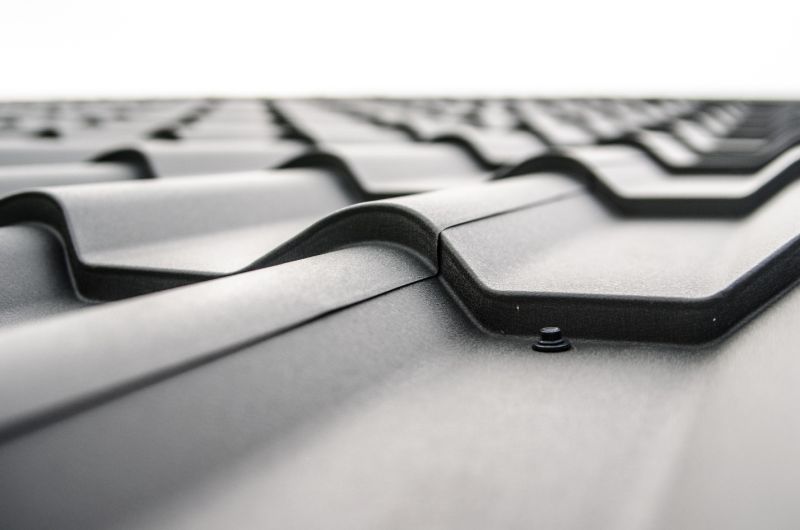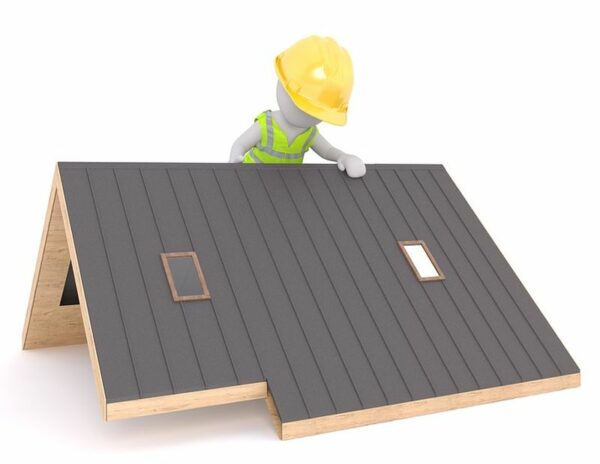While they are a critical part of architecture, often they get overlooked in our maintenance and upkeep. What am I talking about? Why – roofs, of course. They provide us shelter and keep out the rain, snow, or sleet, we don’t think about them often.
That is understandable, of course. We have a lot on our minds most of the time, and don’t need anything extra to keep us up at night. However, maintaining them is really important – especially for an office or other commercial building. If you don’t, the fees can really start to add up.
The History of Roofing
Maybe this sounds like a boring topic, or something you don’t need to worry about. However, trust me – the best way to understand what you are currently working with is to know about the background of it. Otherwise, something might slip through the cracks.
Let us begin with the obvious: a roof is what covers a structure, keeping the interior of a building protected and helping with the exterior aesthetics of it as well. Throughout the centuries that humans have been building shelters, there have been plenty of different materials used for them.
If you are very curious on this topic, you can look at this page: https://www.nps.gov/tps/how-to-preserve/briefs/4-roofing.htm. However, I will give an expedited explanation as well, as I think this sort of thing is important to know. Especially if you own a historical building that will need to be preserved.
Shingles

To start, I will begin with shingles. These were usually made of wood. The specific styles and shapes varied – largely dependent on where they were made. After all, the craftsmen of each region would design them slightly differently – usually to cater to the specific environments in which homes were being built.
Now, as we began to settle into cities instead of in rural areas, what shingles were made of started to shift. After all, wood is highly flammable – and in an urban environment, this can lead to disaster fast. Think about all of the famous fires that have happened in a big metropolis and imagine how bad having a wood roof would be in a situation like that.
That being said, wood ones are not unheard of today. In fact, they are even fashionable in Colonial or Bungalow style houses. They can unfortunately be a bit difficult to maintain due to the nature of the material.
Clay Tile
This type was popularized in Europe. If you’re curious about how it got popularized in the United Kingdom, you can look at this article, but it isn’t incredibly important. The first uses of them were in ancient China, Persia, and eventually Babylon. Clearly, they have a rich history.
They were exported to the Americas a lot during the Age of Exploration. The Dutch exported a lot of them to their colonies and it became quite popular in North America especially, even after the era of colonization ended.
The benefit of this type is that it is quite durable, especially compared to wooden shingles. It also is super easy to maintain. It has gotten a lot more popular again due to the Italian Villa style of architecture. The biggest influence on these terra cotta tiles is the natural deposits of clay in the surrounding areas.
What is nice is that they are not a very flammable material. So – they are a safe and durable choice for tiles but are not always used because of the final type I will touch upon.
Metal

This is the most common type of roofing today. In fact, if you are looking to maintain or install this for your commercial building you could check out this link https://swcommercialroofing.com/phoenix-arizona/, but there are plenty of options out there. This material is probably the most durable due to its nature.
Unfortunately, the most of this type of tile were made of lead historically. Obviously, lead is poisonous – it is quite detrimental to human health. We didn’t know this before, though, so many things were made with it.
Copper was also used during the eighteenth century, but it quickly fell out of fashion. Sheet iron was a decent option that was used after the Revolutionary War. After this, different types of iron became the norm for tiling buildings – tin in particularly gained popularity.
Tin is affordable and easy to produce, hence its fast spread in the United States especially. If you opt for metal today, this is probably what you will end up with due to its low cost and ease of installation and upkeep.
Maintaining a Roof
Now you know what they are made of, but how do you take care of them? Unsurprisingly, this is a bit more complex. After all, each type needs different maintenance. However, there are a few basic rules you should follow.
First of all, you should absolutely have them inspected (and cleaned) at least once a year. Ideally, you will have this done multiple times a year for peak performance and to ensure that disaster does not strike. A cave in would be a terrible surprise during a storm, after all.
This is something to keep in mind in Arizona, of course. The hot weather (especially in the Phoenix area) can negatively affect the tiles. Just keep an eye out for cracking.
Now, you can do this yourself. It involves getting on a ladder and looking at the tiles, and you should have some background knowledge if you are going to attempt it. Usually, something like this is best left to professionals to avoid injury, but if you are going to try it, you may want to look at a resource like this page.
It is best to remember that if you catch the small issues up front, you can prevent a catastrophe from occurring later. Little repairs tend not to cost too much and can in fact save you some cash in the long run. There are a few common issues to take note of.
1. Damaged Materials
There are a lot of components that go into a roof. This includes the material that makes the shingles or tiles, the sealant, and the nails. Any of these things can be damaged by inclement weather or other aspects of the environment you live in.
Holes and cracks are what happen most often in this case but are not the only things that could happen. Just keep an eye on the materials during your routine inspections and try to catch them early on.
2. Debris
This is pretty much what it sounds like: things on top of your building that should not be there. This could be tree branches, leaves, or other stuff. None of it is good for the health of the structure.
It might seem harmless to leave them up there, but unfortunately, if you do, it is inviting trouble. Mold and mildew can grow on these piles and impact the integrity of the tiles below. Additionally, if things seep into the home, it can cause some serious damage to the internal structure as well – even rotting, if not treated.
3. Freezing
Of course, this is only applicable for property owners who live in areas where the temperatures drop to freezing or below. However, it is a huge offender in terms of damaging these structures. The main issue here is water.
You see, water expands as it freezes. Snow likely will not melt fast enough to run off the tiles fast enough for it not to cause issues as the frozen water expands and pushes against the shingles of your roof. During the winter season, it is a good idea to inspect more often to spot some of these issues (especially because it is pretty much impossible to stop the weather).
4. Trees
If you have a yard with a lot of trees or have many of them on your business property, you may already be well acquainted with this problem. You see, both large and small branches can damage your building.
Obviously, large branches can fall and cause a hole or cave in. It can easily become a risk during a storm – I knew a friend who had a large branch land on their home during a windstorm and it broke through the ceiling of their living room!
The solution to this is fairly simple – trim any trees on your property if they get too close to touching the top of the building. You could also relocate them if they are too much of a danger to the area.
Keep a Close Eye Out!
The most important thing here is to be vigilant. You should always take a peek at your roof either yourself or hire a professional for it. If you own a commercial building, don’t slack on this!
The costs to repair small leaks or other issues might seem like a lot, but worse issues will come if you don’t keep up the maintenance. Even insulation of a building can be compromised, raising heating and cooling costs too.
Overall, while we can thank roofs for keeping us safe and secure inside, we do need to take steps to ensure they can continue this. Just don’t do it too late!
Article Submitted By Community Writer




